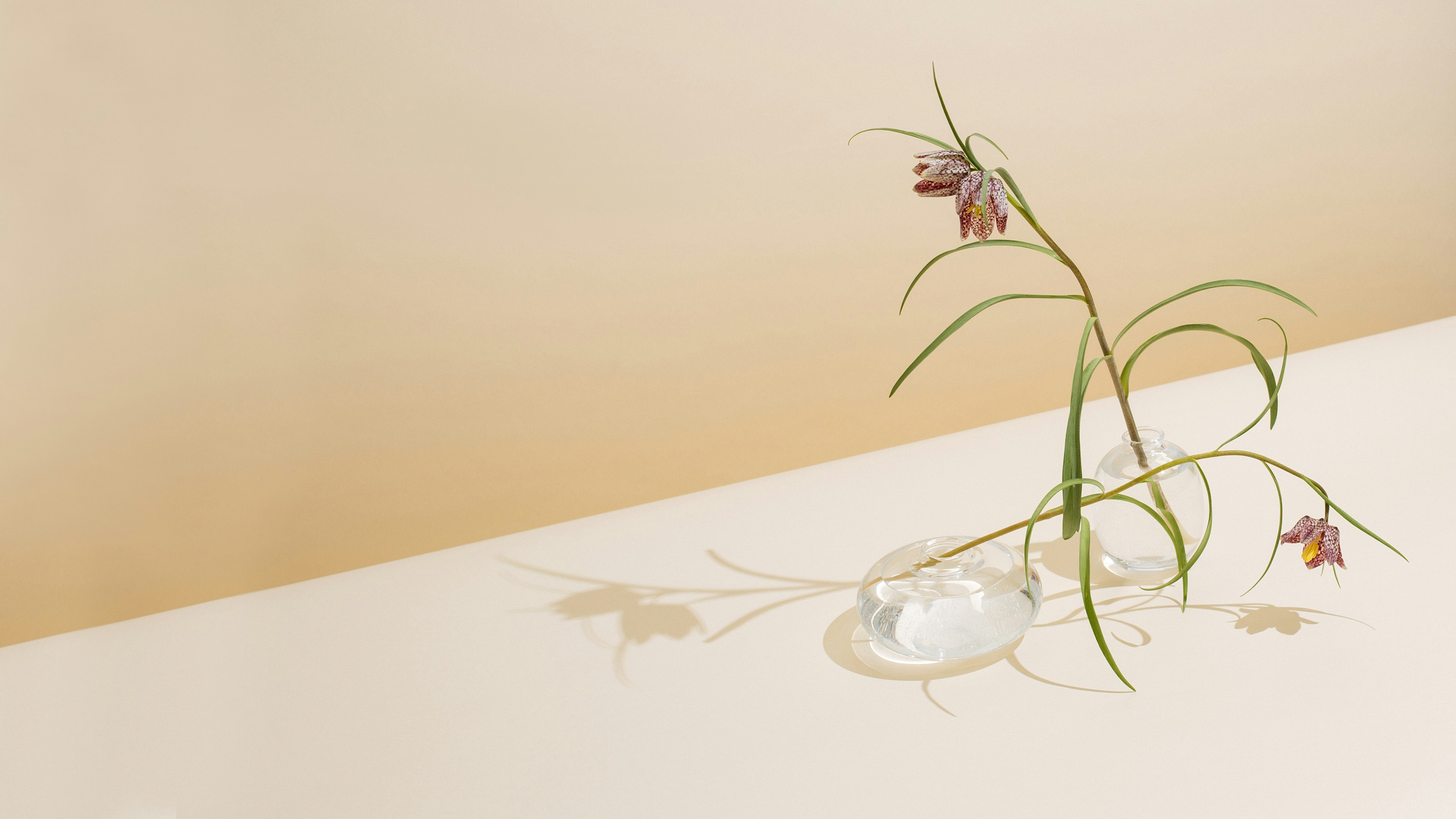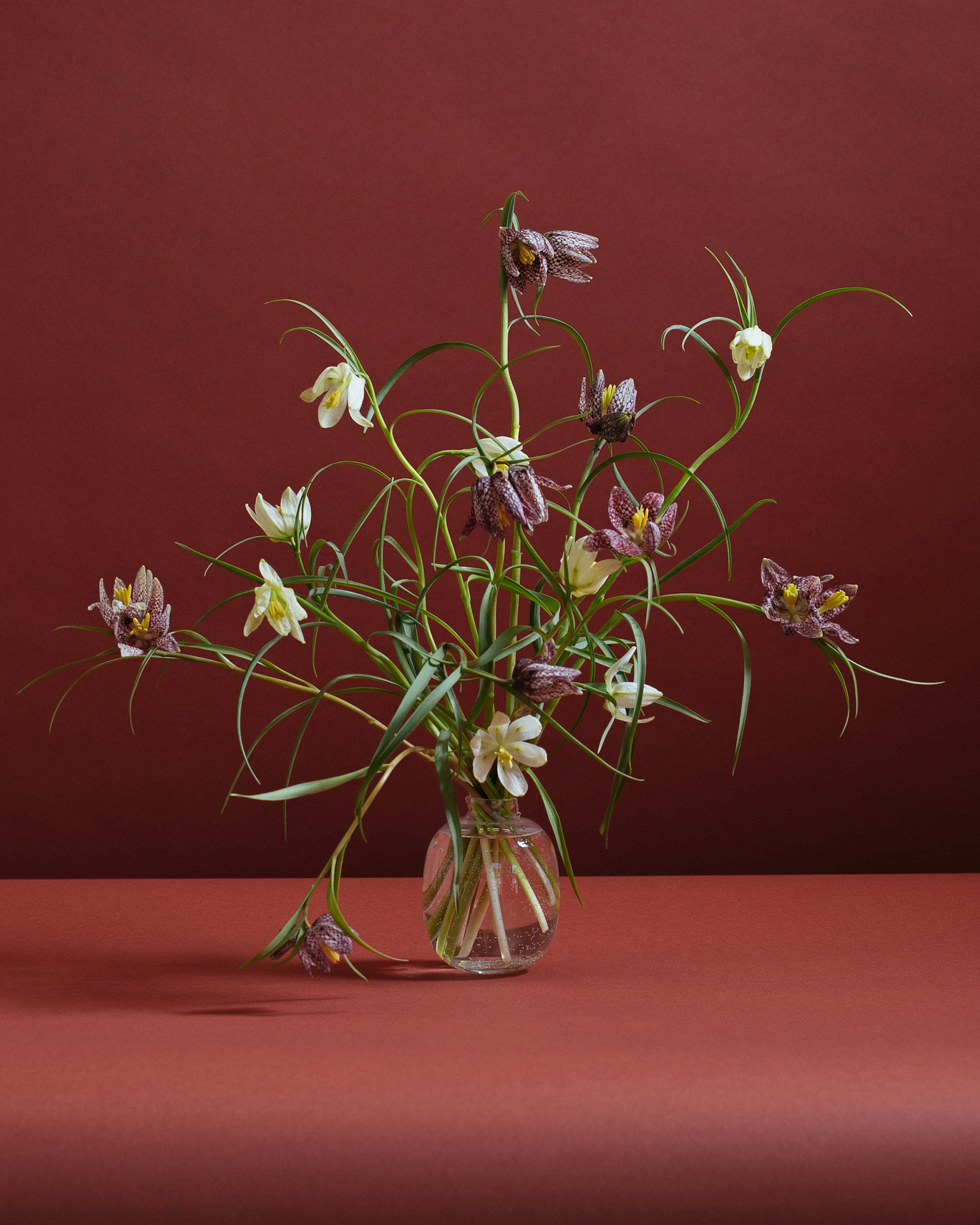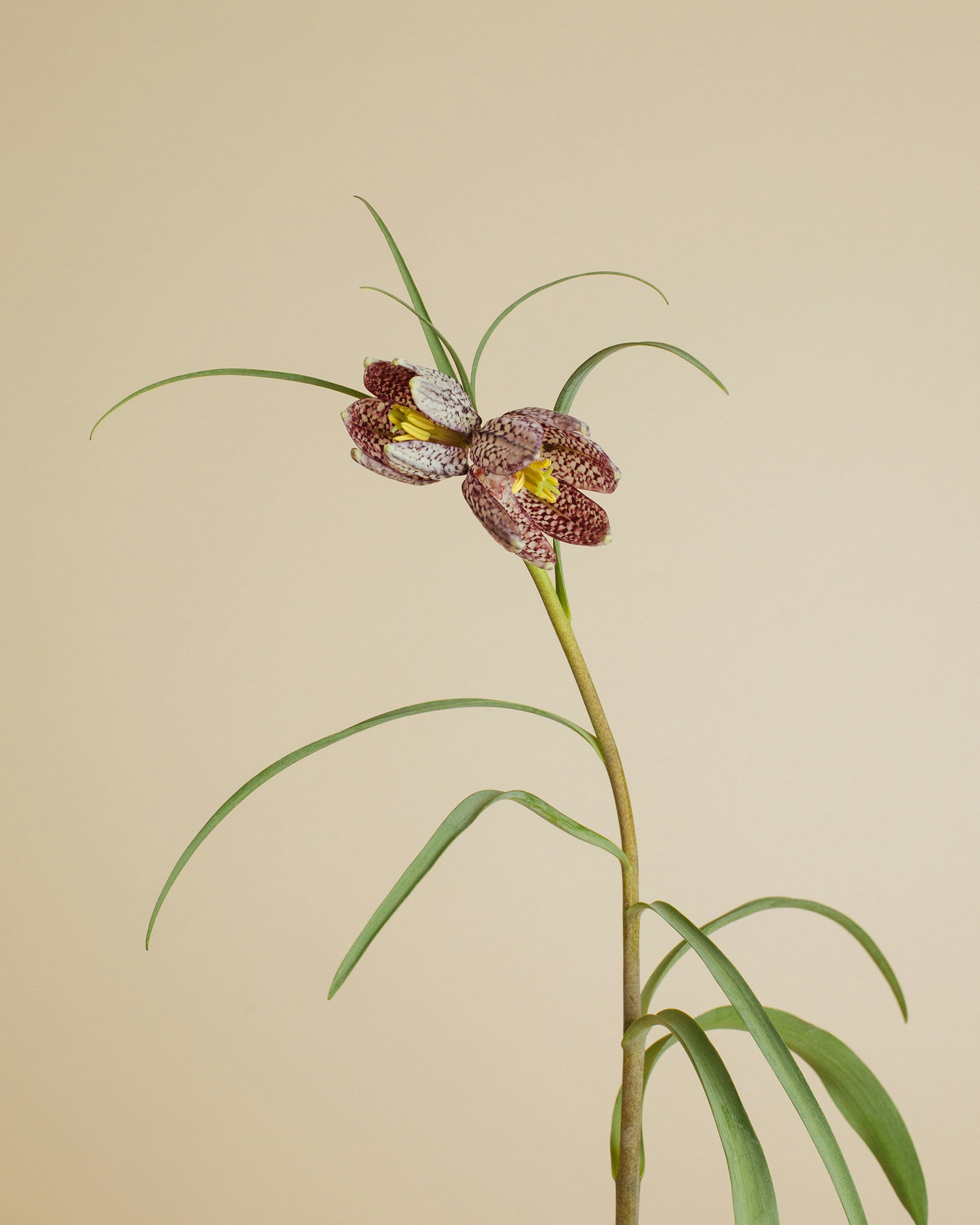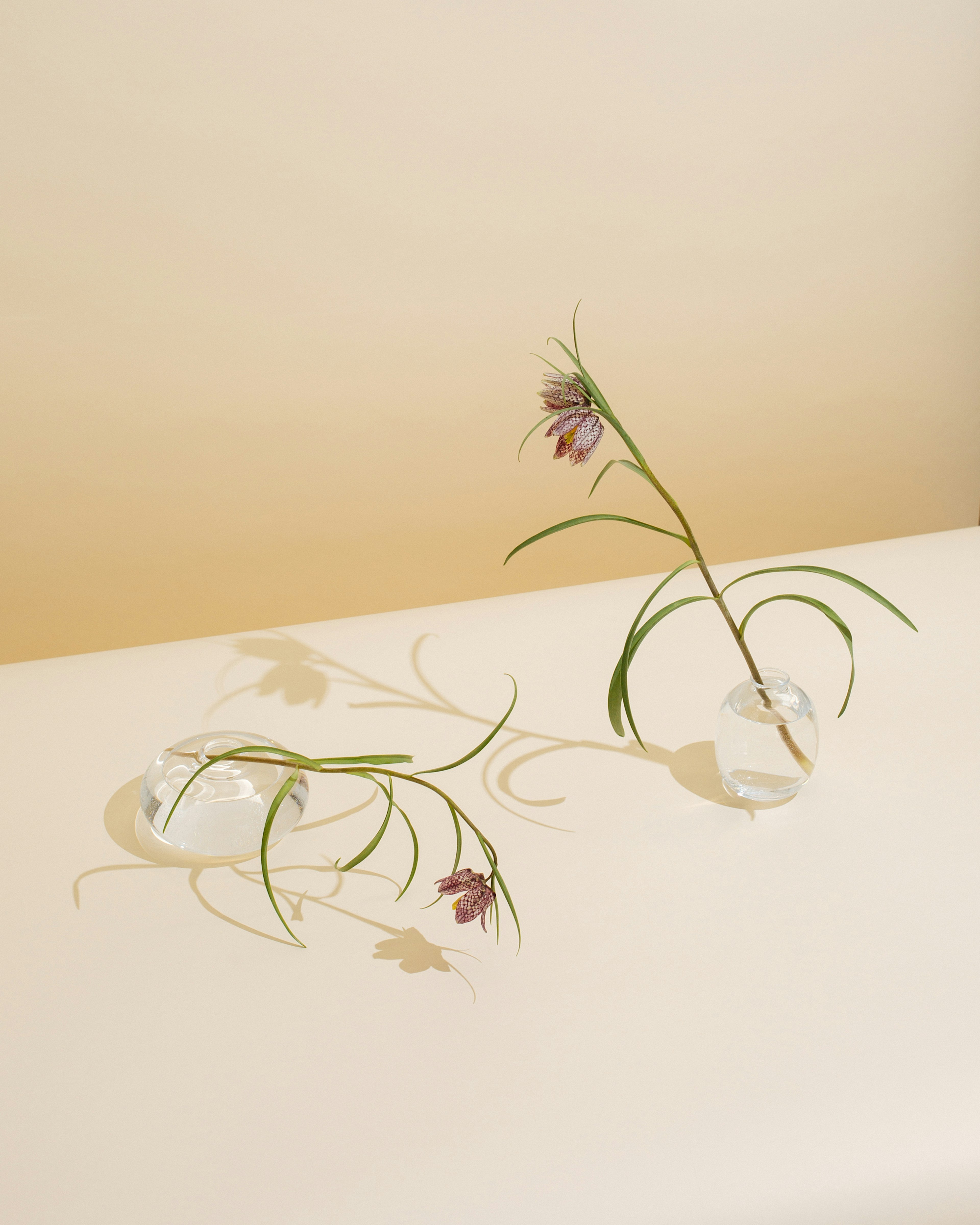
Snake's Head Fritillaria
Flower of the Month
Our Flower of the Month for March? The unique snake's head fritillary, that goes by many other monikers: chess flower, frog-cup, guinea-hen flower, guinea flower, leper lily, Lazarus bell, chequered lily, chequered daffodil, drooping tulip or, in northern Europe, quite simply fritillary. Let’s stick with the snake's head for now.

A brief history…
The fritillary is native to Europe and western Asia. Once a common site in Britain – sold at mass in the spring markets of Covent Garden – the hardy perennial that once bloomed wild beside the River Thames and across meadows in the South is sadly increasingly rare thanks to increasingly aggressive farming methods. But it can often be found growing in gardens, distinctive for the snakeskin-type pattern that adorns the bud. It’s the bud’s appearance before it opens, that’s said to resemble the shape of (you guessed it) a snake. And when it does open, it reveals a striking set of checkerboard purple flowers.

The fritillary’s beauty arrives and changes with the movement of sunlight. As Andy Byfield of The Guardian wrote in his wonderful ode to the flower: “When a glaring sun sits high in the sky, they take on a sombre hue”. Meanwhile Alan Titchmarsh’s description does the fritillary justice. "There are some flowers that simply make you gasp,” he explains. “They do not need to be large and showy – or even particularly brightly coloured. If they possess an innate elegance then that is quite enough to leave any gardener swooning.”

The fritillary has inspired much lyrical outpourings in its honour – so it seems fitting that the fritillary is in fact the county flower of Oxfordshire, one of the great academic and literary strongholds of the world. Beyond words though, and as much as we love the lilting patterns they bring to a bouquet, they are at their finest in the wildes of an English country meadow – poking up beyond the long grass to remind us of the natural beauty there just bursting to get out, if only we’ll allow it to flourish.

Charles Rennie Mackintosh
The fritillary made a name for itself in the art world, too. Most famously through Scottish architect, designer, water colourist and artist, Charles Rennie Mackintosh’s drawings of wild flowers. His 1915 drawing of a fritillary is perhaps his most elegant and delicate of all, brought to life via chequer-work and repetition on its petals that mirrors many of his decorative stencils.

Love from Loewe
What’s that, the fritillary is a fashion favourite too? Spanish luxury fashion house Loewe celebrated Charles Rennie Mackintosh’s creative vision and enduring legacy via their ´LOEWE Conversations´ series, that saw them bring author, gallerist and Mackintosh expert Roger Billcliffe together with renowned design critic and art historian Anatxu Zabalbeascoa to discuss the creative’s work and legacy. In turn, his fritillary drawing appeared on a limited-run T-shirt, and also on their shopping bags.

The Wildlife Trust
One particular nature reserve in the heart of Oxford is doing all its can to preserve the legacy of the snake's-head fritillary, which has in fact made a stellar comeback. When the Berks, Bucks and Oxon Wildlife Trust took over Iffley Meadows in 1983 there were just 500 plants left, but thanks to careful management, there are now an astounding 42,000 flowers that spring up each April, carpeting the field providing a rare and beautiful sight.

Latin Legacy
The botanical name for the fritillary is “fritillaria meleagris” which comes from a combination of the Latin for “spotted like a guinea fowl”. Which we can only assume is the reason for the fritillary’s other names: guinea-hen flower and guinea flower.
Unique Uppland
The fritillary is the official flower of the Swedish province of Uppland. A harbinger of spring, it can be found growing in abundance in the meadows in Kungsängen just outside Uppsala, which gives the flower its Swedish name, “kungsängslilja” that translates beautifully to “lily of kings meadow”.


